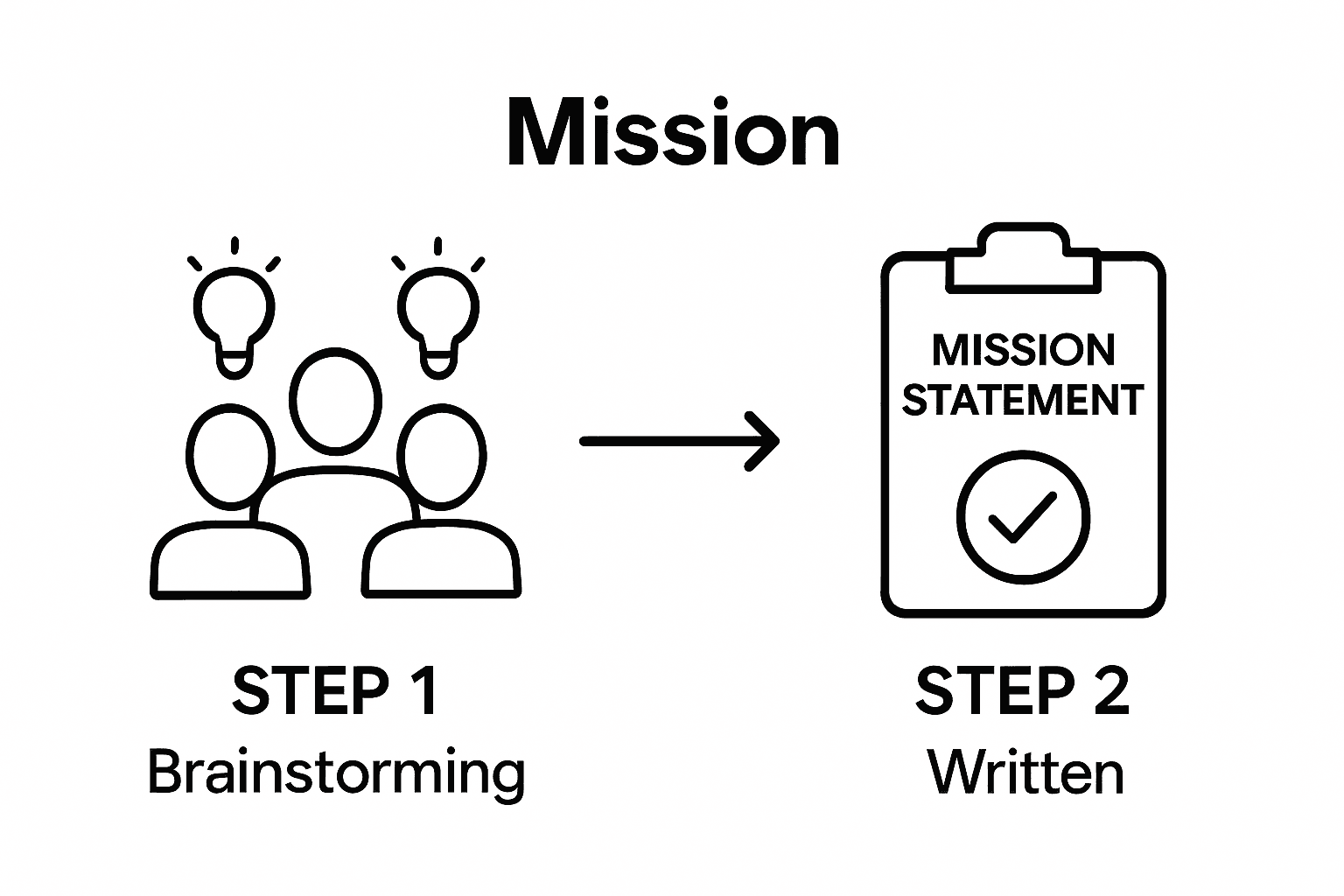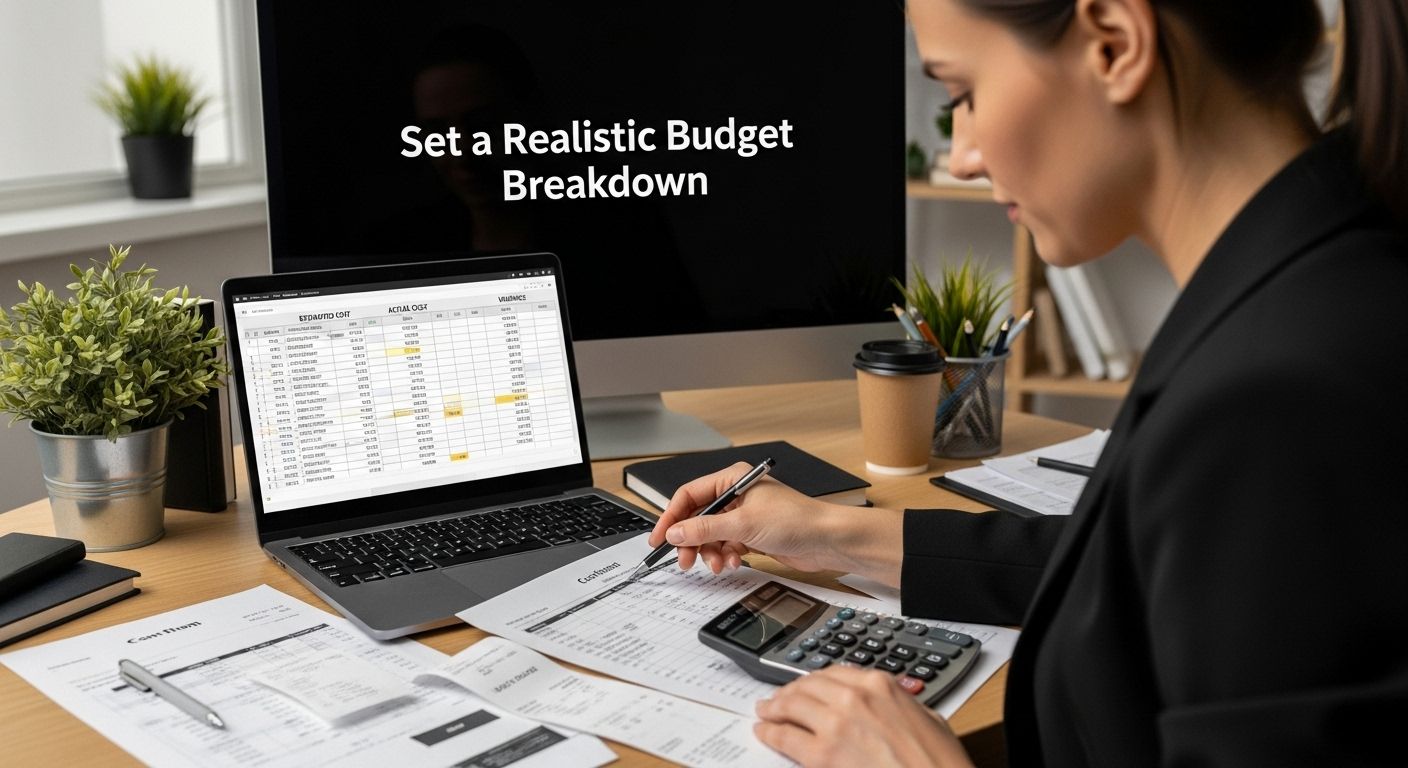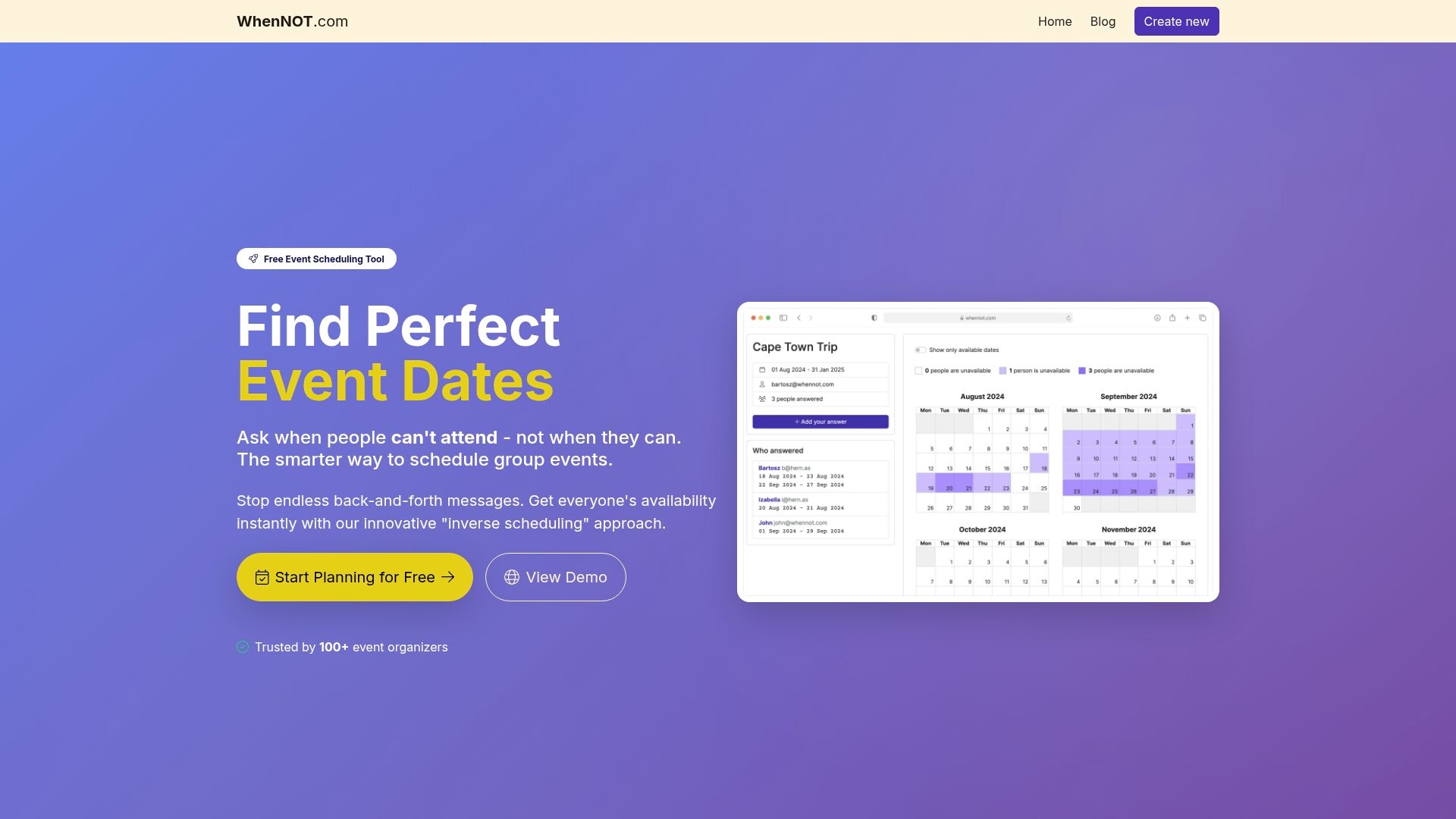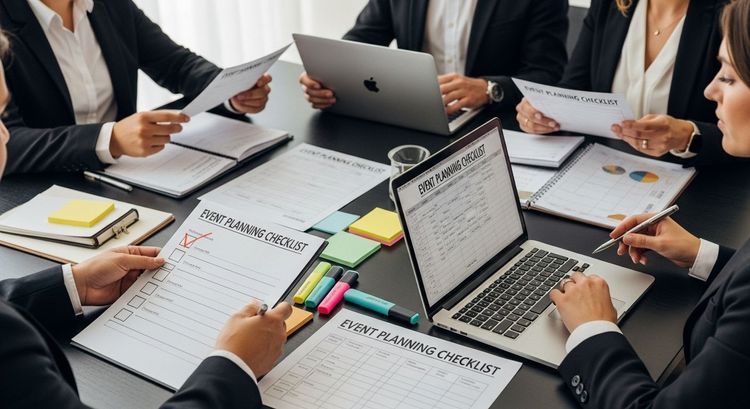Planning a successful event is never just about booking a venue and sending out invites. Most people assume that the secret lies in last-minute details or stylish decorations, but that barely scratches the surface. The real make-or-break moment comes right at the start—79 percent of effective events begin with a sharply defined purpose and measurable goals. Skip this and even the fanciest gathering can fall flat.
Table of Contents
- Step 1: Define The Event Purpose And Goals
- Step 2: Create A Detailed Guest List
- Step 3: Set A Realistic Budget Breakdown
- Step 4: Secure A Venue And Necessary Permits
- Step 5: Plan And Schedule Event Activities
- Step 6: Conduct Final Checks And Confirm Details
Quick Summary
| Key Point | Explanation |
|---|---|
| 1. Define clear event purpose | Articulate specific objectives to guide planning and decision-making throughout the event process. |
| 2. Create a focused guest list | Select attendees based on their potential contributions to achieve the event's goals rather than aiming for large numbers. |
| 3. Develop a realistic budget | Assess all potential costs and prioritize spending to align with your event's purpose, including a contingency fund. |
| 4. Choose the right venue | Ensure the venue matches your event’s purpose and provides a welcoming atmosphere while adhering to budget constraints. |
| 5. Finalize activities and schedule | Create a structured timeline with engaging activities that support the event's objectives, allowing for flexibility during execution. |
Step 1: Define the Event Purpose and Goals
Successful event planning begins with crystal clear purpose and goals. This foundational step transforms a vague gathering idea into a strategic, meaningful experience. Without a well-defined purpose, your event risks becoming unfocused, ineffective, and potentially disappointing for participants.
Starting your event planning journey requires deep reflection on why you are bringing people together. Are you celebrating a milestone, sharing knowledge, building team connections, or raising awareness for a cause? Your purpose will guide every subsequent decision from venue selection to guest list and programming.
Begin by conducting a focused brainstorming session to articulate your event's core objectives. Ask yourself critical questions: What specific outcomes do you want to achieve? Who is your target audience? What lasting impression or action do you want participants to take away? These questions help crystallize your event's fundamental mission.
According to research from the University of Nevada, Las Vegas, defining clear objectives is essential for guiding all event-related decisions. Consider creating a concise mission statement that captures your event's purpose in one or two sentences. This statement becomes your planning North Star, helping you make aligned choices throughout the preparation process.

Your purpose statement should be specific, measurable, and actionable. Instead of a generic goal like "host a nice gathering," aim for something more precise: "Create a professional networking environment where 50 regional entrepreneurs can make meaningful connections and share industry insights." This level of specificity provides clarity and helps you design targeted experiences.
Once you've established your purpose, translate it into measurable goals. These goals will serve as benchmarks for success and help you track the event's effectiveness. Examples might include the number of attendees, specific networking connections made, funds raised, or knowledge transferred.
Remember that your event's purpose should resonate emotionally and practically with your intended audience. A well-defined purpose transforms an ordinary gathering into a memorable, impactful experience that participants will value and remember.
Step 2: Create a Detailed Guest List
After establishing your event's purpose, the next critical step is crafting a comprehensive guest list that transforms your vision into a reality. This strategic process goes far beyond simply jotting down names—it involves thoughtful consideration of who will contribute most effectively to your event's objectives.
Begin by segmenting potential attendees into distinct categories that align with your event's purpose. Consider professional networks, personal connections, key stakeholders, and individuals who can provide unique value to the gathering. Prioritize quality over quantity when selecting participants. A focused, engaged group of 20 people can be significantly more impactful than a crowded room of 100 disinterested attendees.
According to research from the New York City Department of Youth and Community Development, identifying potential invitees at least six weeks before the event ensures smoother coordination and communication. Start by creating a comprehensive spreadsheet that tracks essential guest information. Include columns for names, contact details, professional affiliations, potential contribution areas, and communication preferences.
Consider the diverse dynamics of your potential guest list. Look beyond immediate connections and think strategically about individuals who might bring unique perspectives or unexpected synergies. This might mean including a mix of established experts, emerging talents, cross-industry professionals, or individuals with complementary skills to your core group.
Technology can streamline your guest list management. Utilize digital tools like Google Sheets, WhenNOT, or specialized event management platforms to collaborate, track RSVPs, and maintain communication. These platforms allow real-time updates and can help you monitor guest responses, dietary requirements, and other critical logistical details.
Be prepared to be flexible with your guest list.
Some invitees may decline, while unexpected opportunities might arise to include new participants. Maintain a tiered approach—have primary invitees, secondary backup guests, and a waiting list to ensure you can quickly adapt your strategy if needed.
As you finalize your guest list, review each potential attendee through the lens of your original event purpose. Ask yourself: Will this person contribute to achieving our goals? Can they add unique value to the group's collective experience? This strategic filtering ensures that every invitation is purposeful and aligned with your event's core objectives.
Step 3: Set a Realistic Budget Breakdown
Budget planning is the financial backbone of any successful event, transforming your vision from a conceptual idea into a tangible reality. Creating a realistic budget requires meticulous attention to detail and strategic financial planning. This crucial step demands honesty about your financial constraints while simultaneously ensuring you can deliver an exceptional experience.
Begin by conducting a comprehensive financial assessment that considers every potential expense. Start with your total available funds and work backward, categorizing potential costs into essential and discretionary spending. Your primary categories should include venue rental, catering, equipment, staffing, marketing, transportation, and a critical contingency fund for unexpected expenses.
According to Arizona State University's Event Planning Guide, it's essential to account for hidden costs like taxes, service fees, and delivery charges. Many event planners underestimate these peripheral expenses, which can quickly derail a carefully constructed budget. Allocate approximately 10-15% of your total budget as a buffer for these unexpected financial requirements.
Digital tools can significantly streamline your budgeting process. Spreadsheet applications like Google Sheets or Microsoft Excel offer robust tracking capabilities. Create a detailed spreadsheet with columns for estimated costs, actual expenses, and variance. Color-code your entries—green for under budget, yellow for on track, and red for overbudget—to provide a quick visual representation of your financial health.
Prioritize your spending by directly connecting each expense to your event's core purpose. If networking is your primary goal, invest more in creating comfortable interaction spaces and less on elaborate decorations. Be prepared to make strategic trade-offs. Perhaps you can negotiate with vendors, choose a more affordable venue, or reduce catering expenses to allocate funds to more critical aspects of your event.
Consider alternative funding sources to expand your budget. This might include sponsorships, participant fees, crowdfunding, or institutional support. Each funding stream comes with its own set of expectations and reporting requirements, so document everything meticulously.
Finalize your budget by conducting a thorough review with key stakeholders. Share your comprehensive breakdown, explaining the rationale behind each allocation. This transparency builds trust and ensures everyone understands the financial parameters of the event. Remember, a well-planned budget is not about restricting possibilities but about creating the most impactful experience within your financial means.

Step 4: Secure a Venue and Necessary Permits
Selecting the right venue is more than finding an attractive space—it's about creating the perfect environment that amplifies your event's purpose and ensures a seamless experience for your guests. The venue you choose will significantly impact the overall atmosphere, logistics, and success of your gathering.
Begin your venue search by revisiting the core objectives established in your initial planning. Your venue must align perfectly with your event's purpose, whether that means a professional conference center for a business networking event, a scenic outdoor location for a team-building retreat, or an intimate space for a collaborative workshop.
Start your venue exploration by creating a comprehensive evaluation matrix. Consider critical factors beyond mere aesthetics: accessibility, parking availability, technological capabilities, capacity, acoustics, lighting, and potential layout configurations. Measure these elements against your guest list size, event duration, and specific functional requirements.
Budget considerations play a crucial role in venue selection. Negotiate transparently and understand the full cost structure, including potential hidden expenses like setup fees, equipment rentals, cleaning charges, and overtime rates. Some venues offer package deals that can provide significant cost savings, so explore all available options.
Permit requirements can be complex and vary dramatically depending on your event type, location, and expected attendance. Local government regulations might mandate specific documentation for gatherings above certain sizes, especially for public events or those serving food and alcohol. Contact local municipal offices early in the planning process to understand exact permit requirements.
Technology has transformed venue selection. Utilize online platforms and virtual tour technologies to preview spaces without multiple physical visits. WhenNOT can help coordinate potential date ranges and availability, making the venue selection process more streamlined and efficient.
Practical site visits are irreplaceable. Schedule multiple venue walkthroughs, bringing a detailed checklist to assess every aspect systematically. Take photographs, ask comprehensive questions about restrictions, amenities, and potential limitations. Pay attention to subtle details like electrical outlet locations, Wi-Fi coverage, and emergency exit routes.
Once you've identified your ideal venue, secure it promptly with a formal contract. Carefully review all terms, cancellation policies, and included services. Ensure you have written confirmation of your booking and understand all financial obligations. A meticulously documented venue agreement protects both you and the venue provider, preventing potential misunderstandings.
Step 5: Plan and Schedule Event Activities
Planning and scheduling event activities transforms your conceptual gathering into a structured, engaging experience. This critical step requires precision, creativity, and strategic thinking to ensure every moment contributes meaningfully to your event's overarching purpose.
Begin by creating a comprehensive timeline that maps out each activity with laser-focused attention to detail. Start with your event's primary objectives and work backward, designing activities that directly support these goals. Consider the flow of energy throughout the event—balance high-intensity interactions with moments of reflection, networking opportunities with structured learning sessions.
According to the National Institute for Occupational Safety and Health, effective event planning requires meticulous coordination and stakeholder engagement. Develop a master schedule that includes precise start and end times for each activity, allocated room or space requirements, necessary equipment, and designated facilitators or presenters.
Technology can be your greatest ally in activity scheduling. Utilize digital tools like WhenNOT to coordinate participant availability and preferences. Create a visual timeline using project management platforms that allow real-time collaboration and updates. This approach ensures all team members can view and adjust the schedule dynamically.
Flexibility is key in activity planning. Build intentional buffer times between sessions to accommodate unexpected delays, spontaneous conversations, or technical adjustments. These transition periods prevent schedule compression and reduce participant stress. Aim to include 10-15 minute breaks between structured activities, allowing natural networking and personal processing time.
Consider the diverse needs of your participants when designing the activity schedule. Some individuals prefer structured learning environments, while others thrive on interactive experiences. Incorporate a mix of presentation styles—including lectures, group discussions, hands-on workshops, and collaborative problem-solving sessions—to maintain engagement across different learning preferences.
Practical preparation is crucial. Conduct thorough technical and logistical rehearsals before the event. Test all audiovisual equipment, verify room setups, and ensure presenters understand their allocated time slots. Create detailed run sheets for each activity, including specific instructions for facilitators, required materials, and potential contingency plans.
Finalize your activity schedule by conducting a comprehensive review with key stakeholders. Ensure that every scheduled moment aligns with your original event purpose and provides genuine value to participants. A well-crafted activity schedule is not just a timeline—it's a carefully choreographed experience designed to inspire, educate, and connect.
Step 6: Conduct Final Checks and Confirm Details
The final preparation stage is where exceptional event planning truly distinguishes itself from mediocre execution. This critical phase transforms your meticulously crafted plans into a seamless, professional experience. Conducting comprehensive final checks requires systematic precision, attention to minute details, and a proactive problem-solving mindset.
Begin your final checks by creating a master verification document that comprehensively covers every aspect of your event. This document should include detailed confirmations for venue arrangements, vendor contracts, technical equipment, catering specifications, participant communications, and logistical requirements. Systematically work through each section, marking items as confirmed or requiring immediate attention.
Utilize digital collaboration tools to streamline your final verification process. Platforms like WhenNOT can help coordinate last-minute availability checks and communication with key stakeholders. Create shared spreadsheets or project management boards that allow real-time updates and transparent tracking of remaining tasks.
Communication is paramount during this stage. Conduct comprehensive confirmation calls or emails with all vendors, venue managers, and key participants. Verify precise arrival times, specific technical requirements, menu selections, and any special accommodations. Double-check contact information and establish clear communication protocols for day-of event coordination.
Technical and logistical preparations demand meticulous attention. Perform comprehensive equipment tests, including audiovisual systems, microphones, presentation technologies, and backup communication methods. Create contingency plans for potential technical failures, ensuring you have alternative solutions readily available. This might include backup presentation files, spare equipment, or alternative communication channels.
Participant communication represents another crucial verification area. Send comprehensive event details, including precise location information, parking instructions, recommended arrival times, and any specific requirements or recommendations. Confirm participant registrations, dietary restrictions, and special needs. Create a centralized system for tracking and managing last-minute changes or inquiries.
Financial and contractual details require a final, thorough review. Reconcile all outstanding payments, verify insurance coverage, and ensure all contractual obligations are fully understood and met. Keep detailed documentation of all financial transactions and agreements to prevent potential misunderstandings.
As a final step, conduct a comprehensive walkthrough of the entire event space. Visualize the participant experience from arrival to departure, identifying potential friction points or areas requiring additional attention. This mental rehearsal can reveal subtle improvements or potential challenges that might have been overlooked in previous planning stages.
The following checklist table will help you systematically confirm the most critical final preparations before your event begins.
| Final Checkpoint | What to Verify | Notes/Reminders |
|---|---|---|
| Venue Arrangements | Space setup, access times, amenities | Confirm with venue manager |
| Vendor Contracts | Service details, arrival times, payment | Keep contact info and backup plans handy |
| Technical Equipment | Functionality, backup equipment, access | Test all AV and communications gear |
| Catering Specifications | Menu, delivery time, dietary needs | Double-check final headcount and allergies |
| Participant Communications | Invitations, RSVP, critical instructions | Share parking, arrival, and schedule info |
| Financial & Insurance Review | Outstanding invoices, insurance coverage | Ensure all obligations are complete |
| Walkthrough & Contingencies | Entrance, flow, emergency exits, signage | Visualize guest experience and friction |
Eliminate Scheduling Headaches with WhenNOT
How often does your event planning stall due to endless back-and-forth messages and unending calendar chaos? The article shows just how critical streamlined group scheduling is for building an engaged guest list and nailing the perfect event timeline. When your attendees are busy professionals or bring diverse commitments, finding a date everyone agrees on can feel impossible. Traditional availability polls eat up hours and create frustration at the precise moment you need clarity most.

You do not have to let group coordination slow down the momentum of your carefully crafted plans. Experience the relief of quick, stress-free scheduling with WhenNOT's online tool. In just a few clicks, your group marks only their busy dates, uncovering the best options immediately for any multi-day or flexible event. There is nothing to download, no sign-up required, and your details stay private. Make your next event truly effortless and focus your energy on delivering the meaningful experiences discussed in our ultimate planning checklist. Try it free at WhenNOT today and watch your event come together without the usual scheduling hassles.
Frequently Asked Questions
What are the key steps in planning a successful event?
Successful event planning involves defining the event purpose and goals, creating a detailed guest list, setting a realistic budget, securing a venue, planning and scheduling event activities, and conducting final checks and confirming details.
How can I ensure my event has a clear purpose and goals?
To ensure your event has a clear purpose, conduct a brainstorming session to articulate your objectives. Ask questions about the desired outcomes, target audience, and the impression you want participants to have. A concise mission statement can guide your planning.
What should I include in my event budget breakdown?
Your event budget should include essential categories such as venue rental, catering, equipment, staffing, marketing, and a contingency fund. It's important to account for hidden costs like taxes and service fees by allocating about 10-15% of your budget as a buffer.
Why is it important to have a diverse guest list?
A diverse guest list enriches the event experience by bringing in varied perspectives and expertise. This helps foster meaningful interactions and connections, ultimately contributing to achieving your event's goals.
